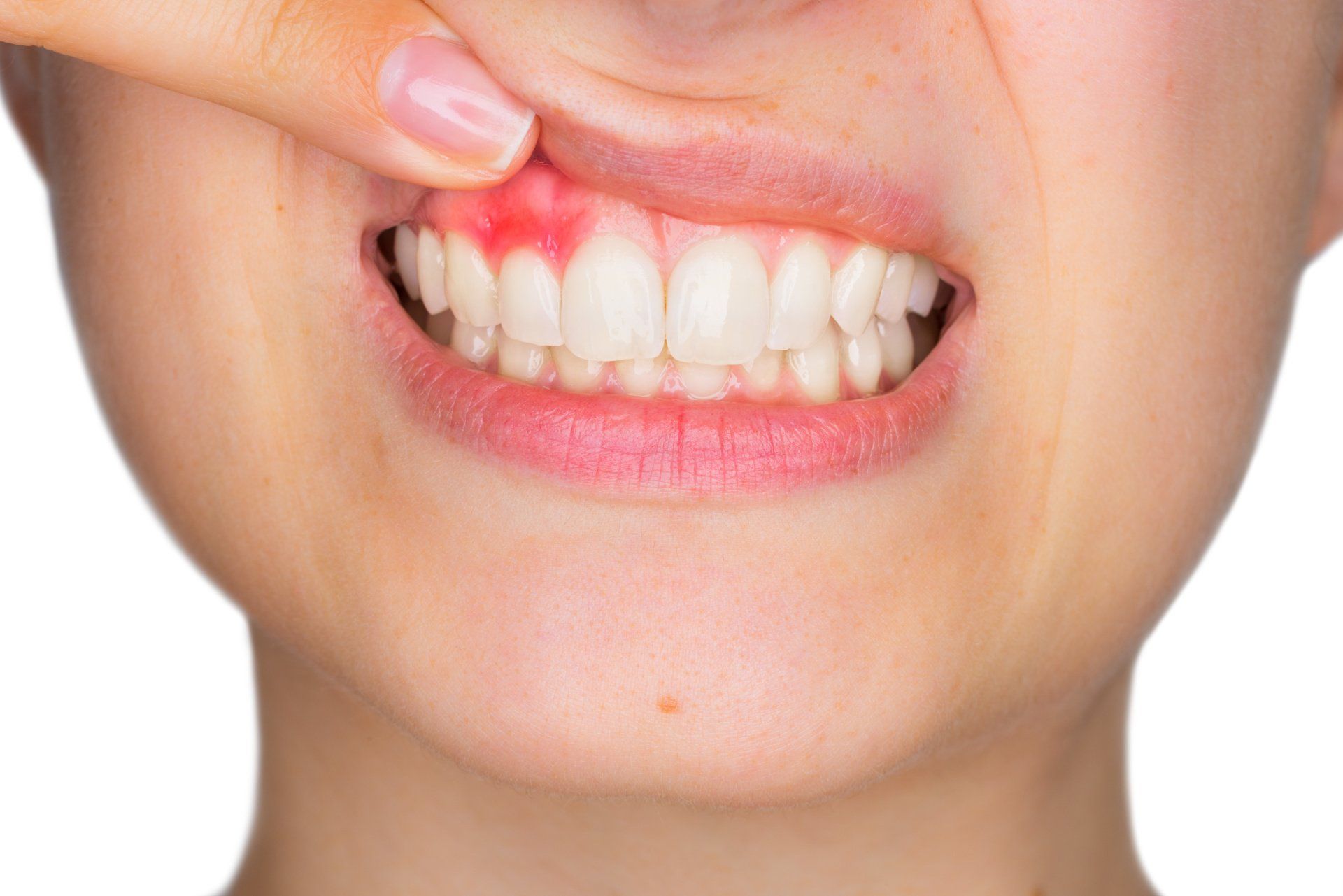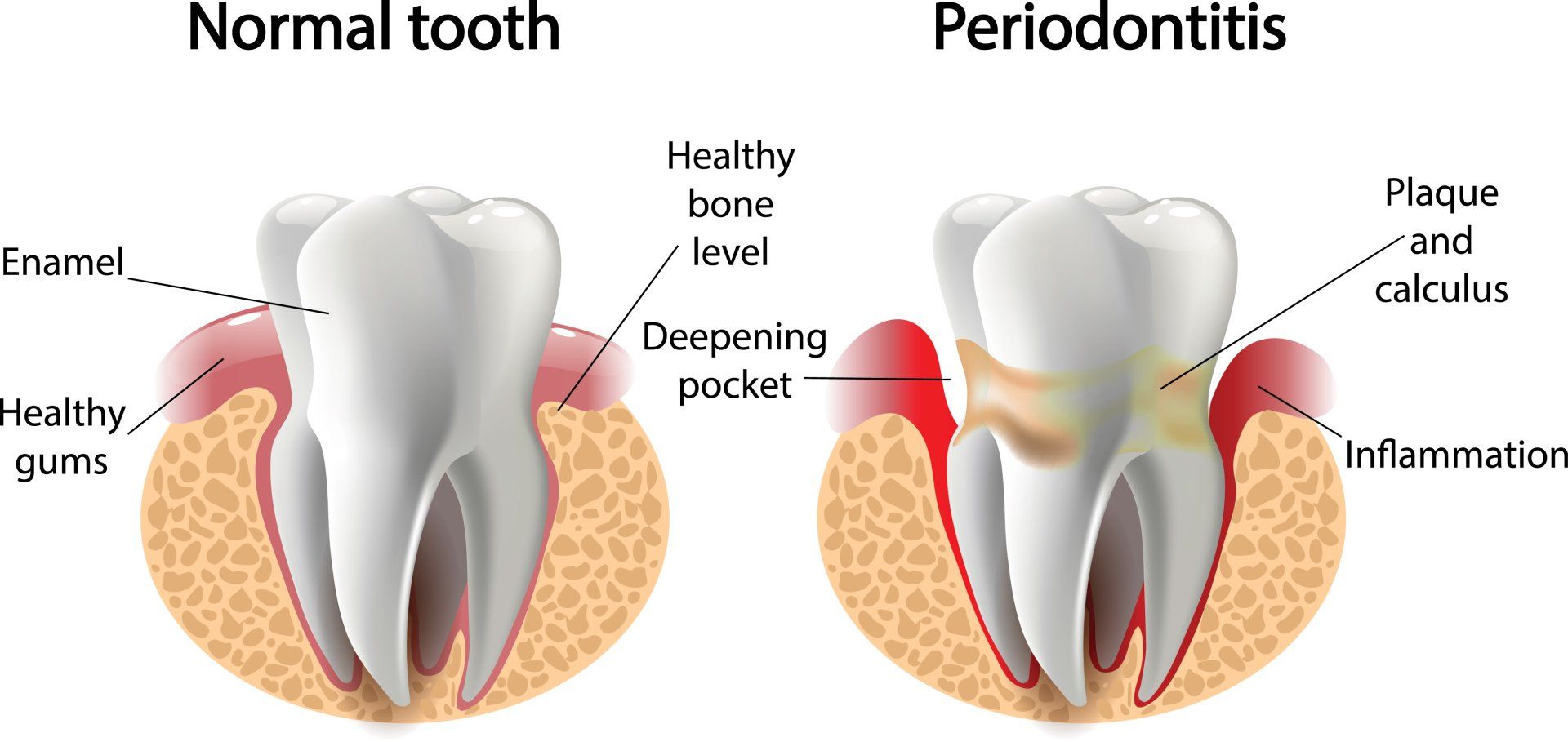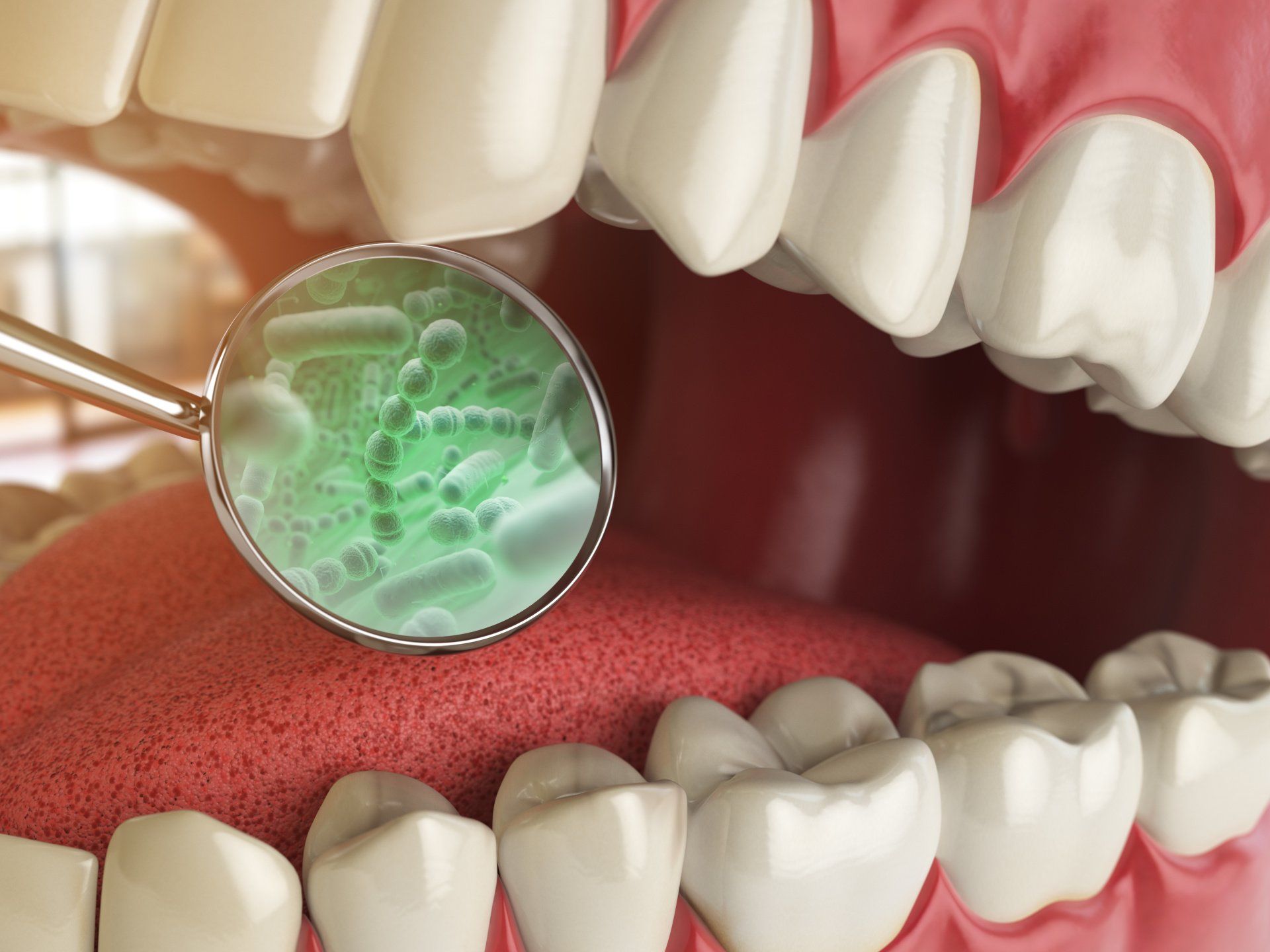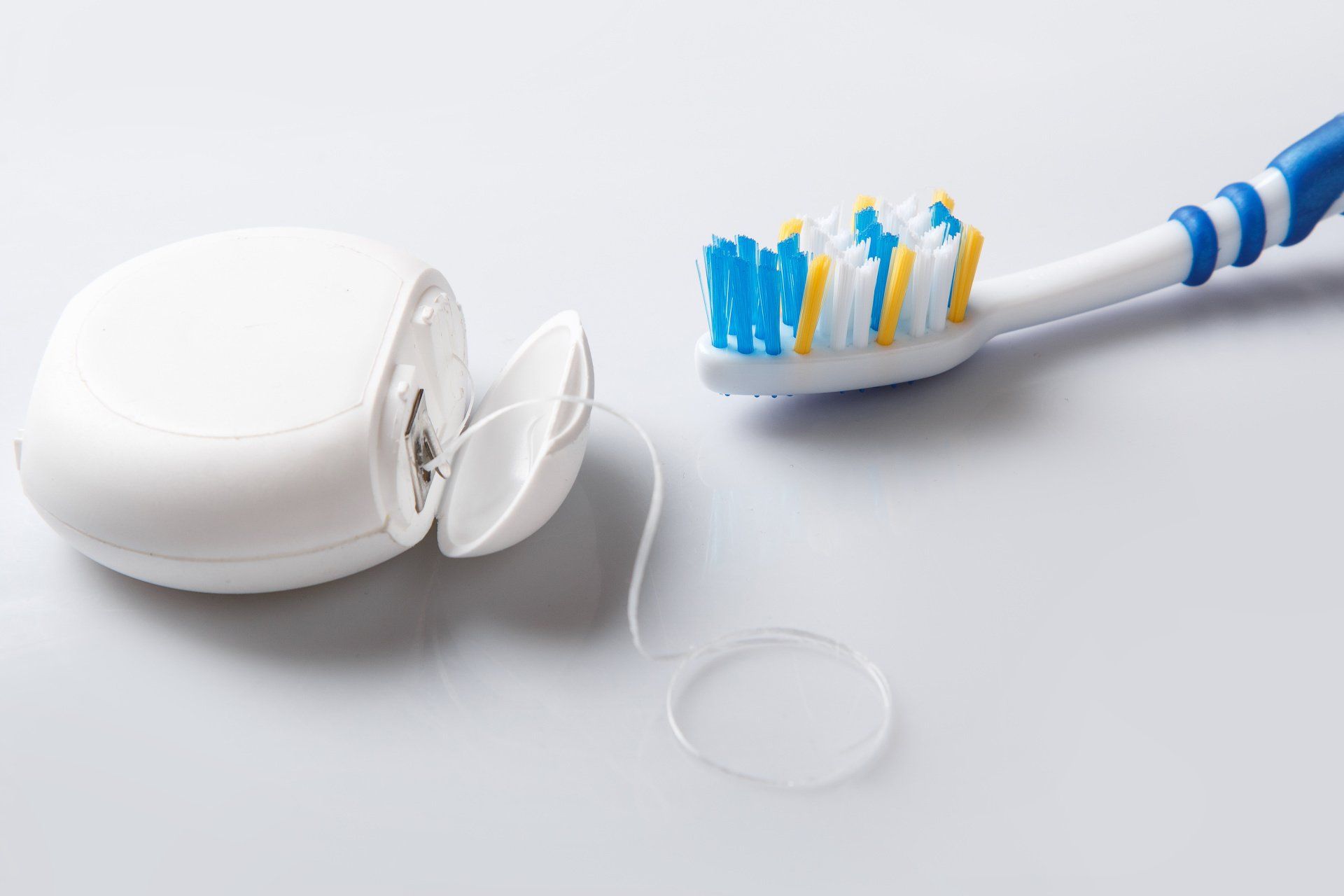Gum Disease Symptoms
Gum Disease Symptoms
Gum disease can start as a silent disease. Gum disease symptoms can be very subtle at first, and discomfort is mild and transitory. By the time you notice more severe gum disease symptoms, the condition is very serious and requires professional treatment. We’ve provided a basic guide to symptoms of gum disease to help you identify and treat it before it becomes too serious and leads to tooth loss or other complications.
If you would like to have your gums evaluated by a dentist in Sydney, please call (02) 4655-3075
to schedule an appointment with Dr. Vikas Bhasin
at the Sydney Laser Gum Centre.
Symptoms of Gingivitis
Gingivitis is minor gum disease. It is highly prevalent, but not necessarily a cause for concern. Many people have gingivitis for years and never see the disease progress to periodontitis.
Symptoms of gingivitis include:
- Red gums
- Gums that are “puffy-looking,” and swollen
- Occasional blood when brushing or flossing
Healthy gums are usually a pale pink, though colour varies similar to the way skin color does. You can often tell the difference between healthy and unhealthy gum tissue because healthy colouration is more uniform, but unhealthy gums tend to grow darker in areas where the gums are swollen.
Healthy gums should taper and scallop along the teeth. Swollen gums will bulge out and create an uneven appearance.
Your teeth should not bleed every time you brush or floss, but it might happen sometimes in relation to gingivitis.
Gingivitis is generally treated by regular dental cleanings. Your dentist may also recommend
Symptoms of Periodontitis
As your gum disease symptoms become more serious, it may develop into periodontitis. We can diagnose periodontitis by the depth of pockets around your teeth. However, you might notice other symptoms related to the condition, such as:
- Chronic bleeding gums
- Tooth sensitivity
- Loose or mobile teeth
- Receding gums
- Chronic bad breath
If your gums bleed spontaneously or every time you brush or floss, it’s a sign that you likely have periodontitis. As the gums detach from the teeth, more of the root becomes exposed, even though you won’t see it, leading to tooth sensitivity. Your teeth are also losing bone support, so they can drift or wobble. Eventually, the gums will start to visibly recede.
Most of the bacteria associated with gum disease are anaerobic--they don’t use oxygen to “breathe.” Instead, they often rely on sulphur, which causes them to excrete smelly compounds, causing chronic bad breath.
In the advanced stages of gum disease, the periodontal ligament which attaches the root of teeth to the gums can become damaged, and eventually teeth will begin falling out. In fact, gum disease is the number one cause of tooth loss in the United States.
If you’ve recently experienced any of the above symptoms, especially more advanced symptoms, you should schedule a checkup and cleaning as soon as possible. To schedule an appointment with Dr. Vikas Bhasin, please call (02) 4655-3705
or email reception@camdendental.com.au.
Better Understanding Gum Disease
At its most basic, gum disease is a bacterial infection. It’s estimated that around 8 billion bacteria of around 700 document species (more are documented every year!) live inside your mouth at any given time. In a healthy mouth, these 700 species live more or less in harmony, performing various duties like digesting specific types of protein, fats, etc, before they reach the stomach. If the right circumstances arise, however, particular bacteria species can begin overproducing, upsetting the balance and getting into places they shouldn’t. Usually this happens when food debris hasn’t been properly cleared away through brushing or flossing, providing an ample food source. Enough build up of bacterial plaque can then triggers an immune response from the periodontal tissue (the gums), causing them to swell.
This swelling and change in color isn’t always easy to recognize, even though it is generally accompanied by bleeding when brushing or flossing. Later, if left untreated, symptoms could include spontaneous bad breath, and receding gums that exposes tooth roots, making those sections sensitive to hot and cold.
Protecting Yourself From Gum Disease
The severity and rate of progression of gum disease depends on a few factors, including the number and type of bacteria present, and how strong the immune response becomes. Many of these factors depend on your genetics. If your parents have suffered from gum disease and tooth decay, it’s likely that you’re more susceptible as well. Other risk factors like smoking and diabetes can also increase the rate of progression. However, genetics don’t have to be fate.
Your first line of defense against gum disease is proper oral hygiene. As your dentist will remind you, it’s recommended that you brush your teeth twice a day, once in the morning and again before going to bed, and floss once. This will help to remove food debris to keep your bacteria playing nice.
Your second line of defense is your dentist! The Australian Dental Association recommends visiting your dentist once every six months for a routine checkup and cleaning. Gum disease doesn’t advance overnight. Regularly visiting your dentist can ensure that gum disease doesn’t advance unnecessarily without treatment.
Advanced Gum Disease Treatment in Sydney
Are you showing signs of gum disease? The office of Dr. Vikas Bhasin
is equipped with LANAP, one of the most advanced gum disease treatments available. To schedule an appointment, please call (02) 4655-3705
or email reception@camdendental.com.au.
Office Hours
Monday: 8 am - 5:30 pm
Tuesday: 8:30 am - 7 pm
Wednesday: 8:30 am - 7 pm
Thursday: 8:30 am - 5:30 pm
Friday: 8:30 am - 5 pm
Saturday: 8 am - 12 pm
Sunday: Closed
COPYRIGHT © 2020 SYDNEY LASER GUM CENTRE | SITEMAP | WEBSITE BY
PRO IMPRESSIONS MARKETING GROUP





